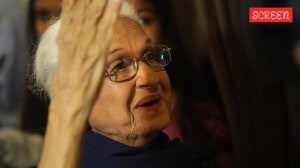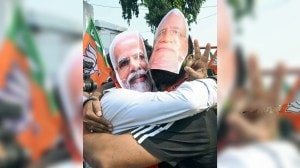View from the witness box
It must have been with a sense of deja vu that the public prosecutor saw the third prosecution witness turn hostile this week in the JJ s...

It must have been with a sense of deja vu that the public prosecutor saw the third prosecution witness turn hostile this week in the JJ shoot-out trial, being conducted almost seven years after gangsters allegedly belonging to the Dawood Ibrahim gang shot at members of a rival gang in September 92. Investigations into the case revealed the involvement of the then Defence Minister and Maharashtra strongman Sharad Pawar’s proteges in the Congress, Pappu Kalani and Hitendra Thakur. It was later revealed that Pawar had allowed one of the accused to accompany him in his official helicopter.
It is barely surprising that witnesses are now stating on oath that they saw nothing. But is it simply a question of the police’s helplessness in the face of the underworld’s clout? When they have wanted to, the police have succeeded in getting convictions. In such cases, witnesses have stuck to their original statements. And in at least one case – the encounters inquiry – the police themselves seem to have played animportant role in getting key witnesses to turn hostile!
Like the JJ shoot-out case, a number of 92-93 riot cases were TADA cases, in which bail was denied and the accused remained behind bars all through. Despite this, of the 12 serious cases which had completed trial a year ago, only in three were convictions granted. The primary reason for the acquittals was witnesses turning hostile. Of the three which resulted in conviction, the most important was the Radhabai chawl case, in which six Hindus, five of them women and children, were burnt alive in a room in Jogeshwari on the night of January 7-8, 93. Eleven of the 17 accused were convicted to life imprisonment by the TADA court in October 96. All but one of the prosecution witnesses stuck to their original statements, and correctly identified the accused in court.
These cases were not too different from the remaining riot cases which resulted in acquittal. In all of them, the victims were murdered in full veiw of the local residents who were threatenedto keep quiet. Weeks later, when the police began investigations the witneses identified the accused. When the cases came up for trial two to five years later, the witnesses retracted.
Why? Because the witnesses continued living amidst the families and accomplices of the accused who would stand outside court during the hearings. So intimidating was their influence that in one case, even the victims retracted their statements! In another, the key witness, a fisherwoman, stuck to her statement when the hearing began at 11 am, but changed it after court reassembled at 2.45 pm.
But no such terror was evident in the cases which resulted in conviction. In the Radhabai Chawl case, all the witnesses had shifted to a Hindu area within Jogeshwari, but out of bounds to the associates of the Muslim accused. In the case of head constable Chandrakant Khopkar, the two witnesses who saw him being stabbed to death on December 7, 92, were themselves policemen, while the accused were locals with no underworld links.Finally, the 65 year-old vagabond charged with killing mathadi
But how can the police protect their witnesses? Firstly, the police can speed up the judicial process, for the longer the time gap between the incident and the trial, the more vulnerable the witness. The police and their Public Prosecutor need only to be present and prepared at every hearing to oppose every plea of bail and adjournment by the defense. But that never happens.
Secondly, the Investigating Officer has enough ways to send out the message that threat to the witnesses will not be tolerated. Far from doing that, in the most henious riot cases, the police did not even bother to follow up on their witnesses, let alone arrange a meeting between them and the PP, leaving them helpless during cross-examination. It was just such a lapse that resulted in the acquittal of the accused in theBorivli case where a mother and daughter were stripped and assaulted in January 93. The daughter and her uncle were then burnt alive. The mother was the key prosecution witness and she didn’t turn hostile.
But was this only a lapse? Compare the police’s conduct in the Radhabai Chawl case, where the witnesses came properly briefed. The police’s determination to win this case extended to not summoning the three survivors of the incident to depose, though they were available. Significantly, their versions differed on all important counts with those of the witnesses lined up by the police.
Getting a conviction in the Radhabai Chawl case was a matter of prestige for the police and the Shiv Sena-BJP government, a vindication of their theory that this incident provoked the seven days of one-sided violence which followed. It may be recalled that the Supreme Court acquitted the accused, dismissing the witnesses’ evidence as unreliable. In the encounters inquiry too, it was absolutely imperative that gangster SadaPawle’s family retract their affidavits which described the manner in which he was shot dead. So, whether witnesses turn hostile or remain consistent all depends on what’s at stake for the police.
Jyoti Punwani is a freelance journalist


- 01
- 02
- 03
- 04
- 05





























